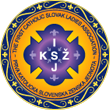PUNA Archives
History of the Polish Union of the USA
The Polish Union of U.S.A. came into existence on August 27, 1890 at St. Paul, Minnesota, then the site of a flourishing Polish colony. Stationed in the thriving Middle West Metropolis was a distinguished Roman Catholic prelate, Monsignor Dominick Majer, who turned out to be a man of destiny. In the discharge of his priestly duties, he recognized the pressing necessity for the establishment of an organization to hurdle the barrier of language, protect the immigrant from unscrupulous strangers, provide for him adequate life insurance benefits, educate him the ways of the land of his adoption and preserve both religious faith, and culture of his native Poland.
At his invitation, 94 residents of St. Paul affiliated with three established groups assembled in St. Adalbert’s Church to canvass the situation. Msgr. Majer outlined his program to form a national fraternal organization and it was enthusiastically accepted. With characteristic thoroughness, he had prepared a constitution and it was adopted. It made membership available to Catholics of Polish heritage and stressed loyalty to the United States. The name adopted by the organizers was Unja Polska w Ameryce (Polish Union of America).
The Polish Union prospered from the beginning. In 1893, it had 3,000 members on its rolls. With organizational work in full swing, a decision was reached in 1896 to move national headquarters closer to the Atlantic coast since St. Paul was on the perimeter and a central location was desirable if the best interest of the immigrants were to be served. Buffalo, New York, was the choice and there the offices remained until 1906, then moved to Wilkes-Barre, P A An unfortunate incident occurred at the 8th Convention held in Chicago, in 1908, when delegates decided a corporate split of the fraternal. One half of the membership voted Buffalo, NY. and the other half decided to remain in Wilkes-Barre, P A Both fraternals share a mutual history. The fraternal in Buffalo, adopted the name of Polish Union of America and the membership in Wilkes-Barre, incorporated as Polish Union of the United States of North America.
Despite the split, Polish union in Wilkes-Barre continued to prosper, both in membership and assets. In 1918 it had a membership of 19,000; in 1921, 28,000. In 1927 the membership reached 39,000. As the membership was nearing the 45,000 mark, it was decided by the board that a two-story structure be built at 53-59 N. Main St., Wilkes-Barre, P A, to house the fraternal. The impressive and architecturally acclaimed edifice was dedicated June 5, 1938.
Polish Union from its inception offered low interest mortgages to its members. During the depression years of 1930’s, when commercial banks were foreclosing on delinquent mortgages, the Polish Union, in a benevolent act towards its members who were unemployed, unable to meet payments, gave them amnesty. Thus, Polish Union saved hundreds of families in Northeastern Pennsylvania from losing their homes.
During the two World Wars, Polish Union has answered the call of this nation. Millions of dollars of Liberty bonds and War bonds were purchased by the fraternal and its individual members. A total of 3,345 young men and women, members of the Polish Union, served in the armed forces during World War II. And, 122 members paid the supreme sacrifice during that war. The Polish Union has been a member and a strong supporter of the Polish American Congress since its inception in 1944. It has participated in all its civic and political programs both on the local front and on the national scene.
Prior to and at the end of World War II, Polish Union had its turbulent years, as did many other similar ethnic fraternals. Adding to the problems was when the Insurance Department of the State of Pennsylvania changed the rate structure of the fraternal’s insurance portfolio, and instructed Polish Union to convert thousands of its certificates which forced an increase in premium rates. Many members refused to accept the conversion and the higher premium rates and thus dropped their life insurance certificate.
There were other factors that have been attributed to the decline of interest in Polish Union and other ethnic fraternals among third and fourth generations, including intermarriage, overall decline in birth rates, the immigration restrictions, the inability to speak the Polish language, overall change in society and the assimilation of the Polish American into that society; and most important their diversified needs which were served by other civic, social and veteran organizations much more satisfactorily than by ethnic Fraternals.
In order to combat the apathy amongst the present generation toward ethnic fraternals, following the 1974 Polish Union Convention in Scranton, P A., the new administration under the leadership of Henry J. Dende, president, accepted the challenge to revitalize the Polish Union by issuing new programs and projects to attract people of all ages, especially the youth. The life insurance portfolio was modernized. The scholarship aid program was expanded. A Fraternal Activities Coordinator as well as a Membership Coordinator was named. The following activities are offered for members and community enrichment: Debutante Ball, Holiday parties for youngsters, crowning Miss Polish Union, arts & craft classes, ethnic cooking classes, paper cut-out (Wycinanki) classes, family picnics, egg coloring (Pisanki) workshops, Flag Day ceremonies, bus trips, Christmas ornament classes, polka & country dance classes, preservation of Polish customs, e.g., St. Joseph Day party, Easterfare, Christmas wafer (Oplatek) suppers, Polish Language classes, etc.
Thousands of hours are spent by Groups and members in “volunteerism” visiting the sick at home and at hospitals, assisting families in need, donating food to the poor, financial donations to numerous needy causes, fighting discrimination, and members are doing their part to help keep our streets free from crime.
The Polish Union Board of Directors approved a merger contract with the First Catholic Slovak Ladies Association (FCSLA). The document was approved by our delegates at the January 8 Convention. The merger was completed June 1, 2017.
Fraternal Journal Issues
The Fraternal Journal is the official publication of the Polish Union of USA/AMERIPOL. As a benefit of our Fraternal, a complimentary copy is sent to each member household 4 times a year. The Spring, Summer, Fall, Winter issues carry news about members of the Fraternal as well as pictures and stories of past activities and an event calendar for future activities. Special items of interest on recipes, polish language, sports and other items are included in each issue.


